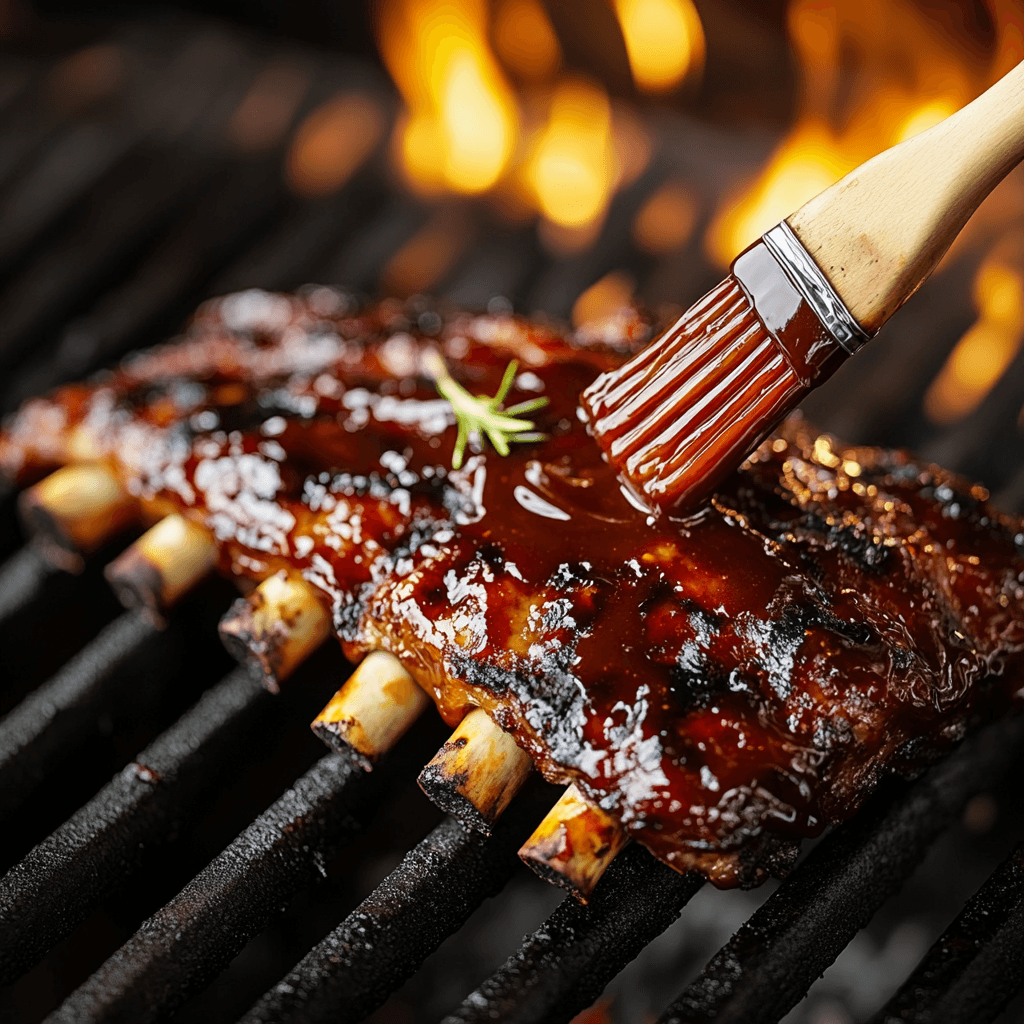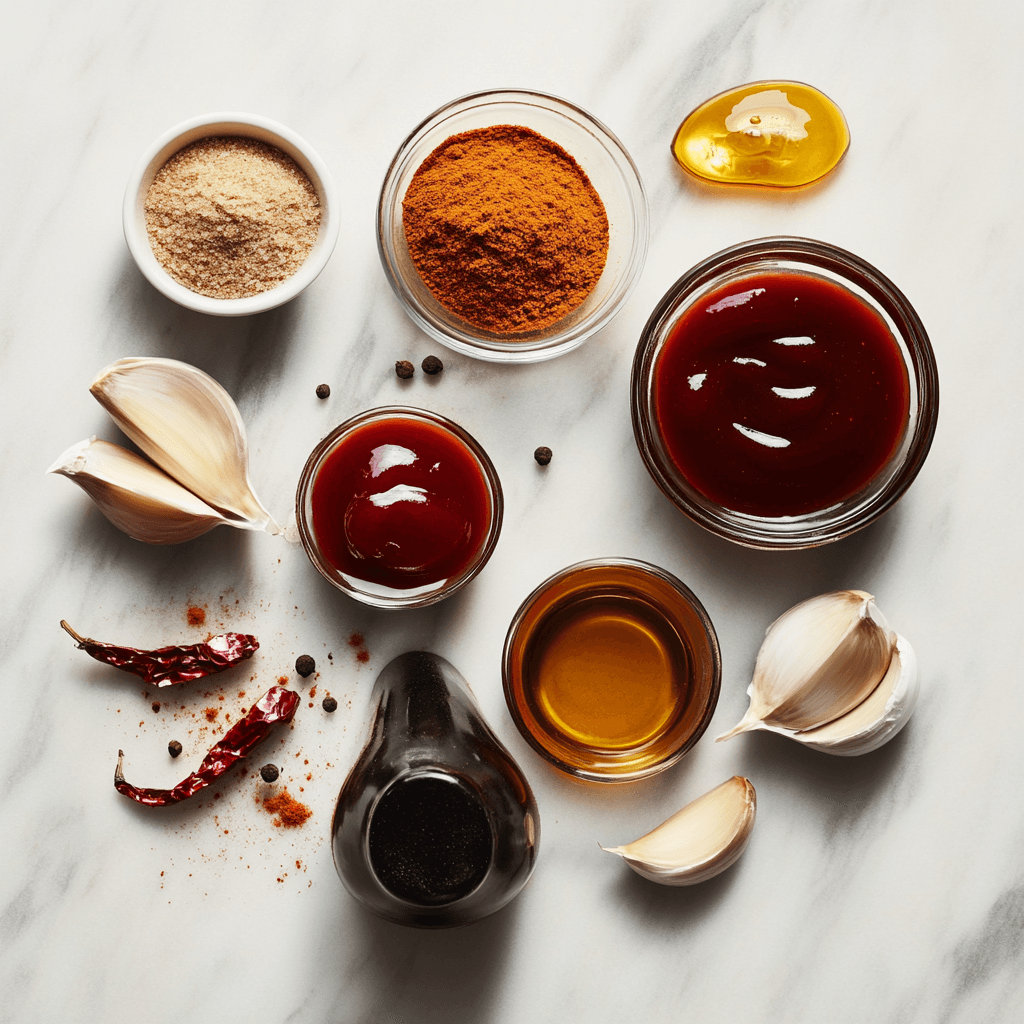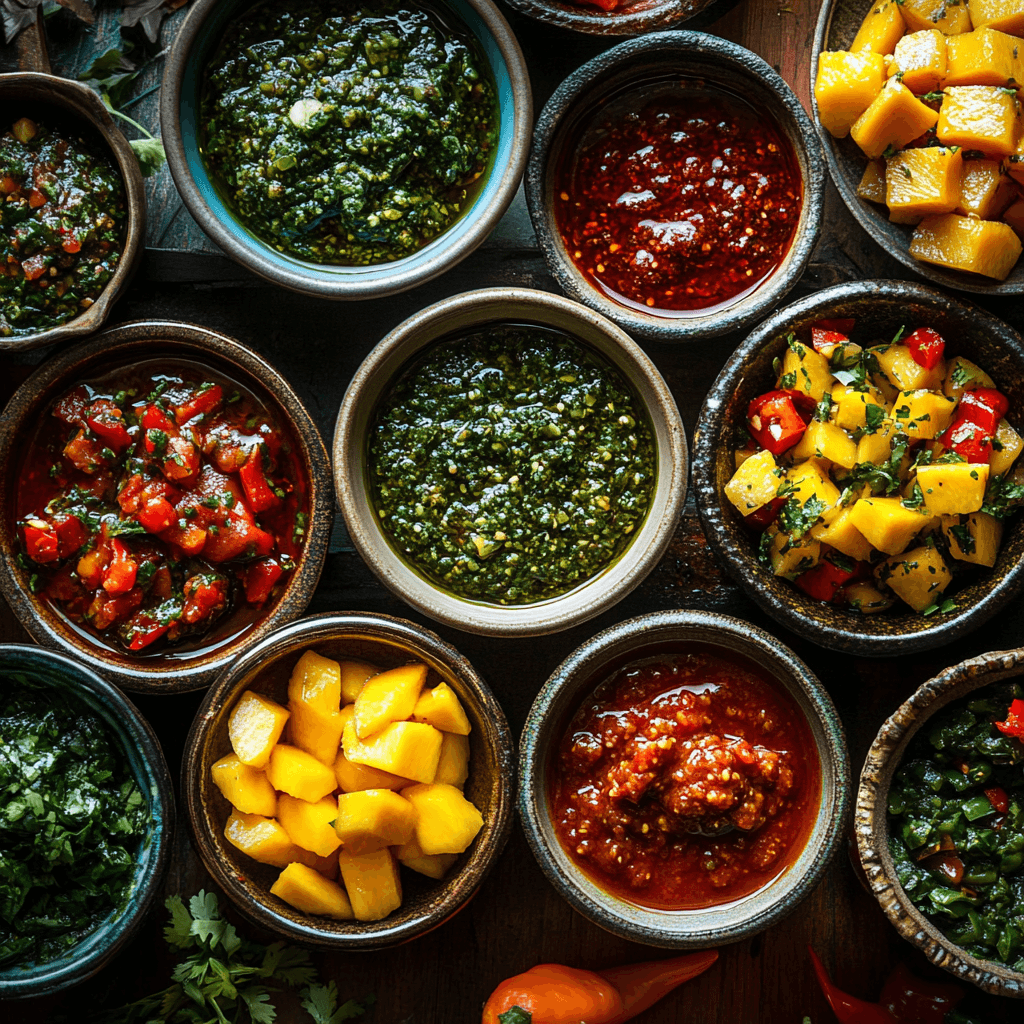Barbecue (BBQ) sauce is a popular condiment that enhances the flavor of grilled and smoked dishes, particularly meats. This rich and flavorful sauce varies widely in taste, texture, and ingredients depending on regional and cultural influences. Known for its ability to complement everything from ribs to chicken, BBQ sauce has become a culinary staple in many parts of the world.

Table of Contents
History of BBQ Sauce
The origins of BBQ sauce can be traced back to early colonial America, where European settlers brought their cooking techniques and sauces. Influenced by African, Caribbean, and Native American culinary traditions, the first versions of BBQ sauce were simple mixtures of vinegar, salt, and spices. Over time, as trade introduced new ingredients such as molasses, tomato, and mustard, these sauces evolved into more complex recipes.
In the 19th century, BBQ sauce became particularly associated with Southern American cuisine, where different regions developed distinct styles. For example, vinegar-based sauces emerged in the Carolinas, mustard-based sauces became popular in South Carolina, and tomato-based sauces gained prominence in Kansas City. Each style reflected local tastes and available ingredients, creating a rich diversity of BBQ sauce varieties.
Basic Ingredients of Traditional BBQ Sauce
Traditional BBQ sauce typically includes a combination of the following key ingredients:

- Base Ingredients:
- Tomato Paste or Ketchup: Provides sweetness and a rich, tangy base.
- Vinegar: Adds acidity to balance the sweetness and enhance the sauce’s depth.
- Mustard: A tangy component in some regional variations, especially in the South.
- Sweeteners:
- Brown Sugar or Molasses: Creates a caramelized sweetness.
- Honey or Maple Syrup: Natural sweeteners for added complexity.
- Spices and Seasonings:
- Smoked Paprika or Chili Powder: For a smoky, spicy kick.
- Garlic Powder and Onion Powder: Add savory undertones.
- Cayenne Pepper: Offers heat for those who prefer a spicier sauce.
- Liquid Enhancements:
- Worcestershire Sauce: Provides umami depth.
- Apple Juice or Stock: Adds moisture and a subtle layer of flavor.
- Optional Additions:
- Liquid Smoke: Mimics the flavor of traditional smoked BBQ.
- Hot Sauce: For an extra spicy twist.
While traditional BBQ sauces provide a strong foundation, creative variations often incorporate regional or international flavors, ensuring BBQ sauce remains a versatile and beloved condiment worldwide.
Understanding Ketchup
Ketchup is one of the most widely recognized and consumed condiments globally. Its tangy-sweet flavor and smooth texture make it a versatile addition to many dishes. Originating from fermented fish sauces in Southeast Asia, modern ketchup has evolved into a tomato-based condiment that is a staple in kitchens worldwide.
What is Ketchup Made of?
Ketchup’s distinct flavor and consistency come from a carefully balanced mix of ingredients. While recipes may vary slightly by brand or region, the core components of ketchup typically include:
- Tomatoes:
- The primary ingredient, providing the rich red color and base flavor. Tomato paste or puree is often used for a concentrated flavor.
- Vinegar:
- Adds acidity, balancing the sweetness and preserving the ketchup for longer shelf life.
- Sweeteners:
- Commonly sugar or high-fructose corn syrup to give ketchup its signature sweet taste.
- Salt:
- Enhances the flavor and helps in preservation.
- Spices and Seasonings:
- Includes onion powder, garlic powder, and a mix of spices such as allspice, cloves, or cinnamon for a subtle complexity.
- Water:
- Ensures the ketchup has the right consistency.
These ingredients are blended and cooked together to create the thick, flavorful sauce that’s familiar to consumers. Some variations, such as organic or low-sugar ketchups, adjust these ingredients to cater to specific dietary preferences.
The Role of Ketchup in Cooking
Ketchup is more than just a condiment for dipping fries or topping burgers—it plays an important role in cooking by enhancing flavor and acting as a versatile ingredient. Some of its key roles include:
- Flavor Enhancer:
- Ketchup’s balance of sweetness, acidity, and umami makes it a perfect addition to marinades, sauces, and glazes. It enhances the taste of meats, vegetables, and even snacks like potato chips.
- Base for Sauces:
- Many popular sauces, such as BBQ sauce and cocktail sauce, use ketchup as a foundational ingredient.
- Glazing Agent:
- Its high sugar content makes ketchup ideal for glazing meats like meatloaf, ribs, or chicken, creating a caramelized finish when cooked.
- Ingredient in Stews and Casseroles:
- Ketchup adds a touch of sweetness and tanginess to stews, casseroles, and even baked beans.
- Cultural and Regional Adaptations:
- In many cuisines, ketchup is used innovatively, such as in Filipino-style spaghetti or as a dipping sauce mixed with mayonnaise or hot sauce.
How BBQ Sauce is Made
BBQ sauce is a flavorful and versatile condiment, crafted through a combination of simple ingredients and cooking techniques. While the base process remains similar, there are notable regional variations that add unique twists to its flavor. Understanding the preparation and variations helps in appreciating this beloved sauce.
Step-by-Step BBQ Sauce Preparation
To create BBQ sauce at home, follow these straightforward steps. Each step builds upon the last, ensuring a smooth and rich result.
- Gather Ingredients:
- Common ingredients include ketchup, vinegar, brown sugar, molasses, spices (like smoked paprika and chili powder), garlic powder, and Worcestershire sauce. Adjust the quantities based on personal taste.
- Mix the Base:
- Combine ketchup and vinegar in a saucepan. Stir them together to create a smooth base.
- Add Sweeteners and Spices:
- Gradually add brown sugar, molasses, and spices. Mixing thoroughly ensures even distribution of flavors.
- Simmer the Sauce:
- Heat the mixture over medium heat. Stir frequently to prevent sticking, and allow the flavors to meld as the sauce thickens.
- Taste and Adjust:
- Sample the sauce and adjust the seasoning. For instance, add more vinegar for tanginess or brown sugar for sweetness.
- Cool and Store:
- Once the sauce reaches the desired consistency, remove it from heat. Let it cool before storing it in an airtight container.
By following these steps, you can create a BBQ sauce that matches your flavor preferences while avoiding preservatives often found in store-bought options.
Regional Variations in BBQ Sauce Recipes
BBQ sauce is far from uniform. It varies significantly across regions, reflecting local tastes and culinary traditions. Some of the most notable variations include:
- Carolina-Style Sauce:
- Found in North and South Carolina, this version is vinegar-based with a thin consistency. While North Carolina favors a simple vinegar-pepper sauce, South Carolina adds mustard for a tangy twist.
- Kansas City-Style Sauce:
- Known for its thick, sweet, and smoky flavor, this tomato-based sauce includes molasses and brown sugar. It’s a crowd favorite for ribs and chicken.
- Texas-Style Sauce:
- With a bold and spicy profile, Texas-style BBQ sauce often incorporates chili powder and less sweetness. It pairs perfectly with smoked brisket.
- Alabama White Sauce:
- A unique variation, this mayonnaise-based sauce includes vinegar, black pepper, and horseradish. It’s commonly used on smoked chicken.
- Memphis-Style Sauce:
- This sauce balances sweet and tangy flavors, often with a touch of molasses and vinegar. It’s thinner than Kansas City-style and complements dry-rubbed meats.
The Culinary Significance of BBQ Sauce
BBQ sauce is more than just a condiment—it’s an essential part of many cuisines. Its rich, smoky, and tangy flavors make it a favorite for enhancing grilled and smoked dishes. While it is deeply rooted in American cuisine, its global variations show how cultures have embraced and adapted it.
BBQ Sauce in American Cuisine
In American cooking, BBQ sauce plays a central role, especially in outdoor grilling and smoking traditions. It is often used as a marinade, baste, or finishing sauce, adding flavor and moisture to dishes.
- Enhancing Grilled Meats:
- BBQ sauce is commonly brushed on ribs, chicken, and brisket during grilling or smoking, creating a flavorful glaze. The sauce caramelizes under heat, adding depth to the dish.
- Regional BBQ Traditions:
- In the U.S., BBQ sauce styles vary by region. For example:
- Kansas City: Sweet and thick, ideal for ribs and pulled pork.
- Carolina: Vinegar-based and tangy, perfect for pork shoulder.
- Texas: Spicy and bold, often paired with brisket. These variations highlight the diverse approaches to BBQ in different parts of the country.
- In the U.S., BBQ sauce styles vary by region. For example:
- Pairing with Side Dishes:
- BBQ sauce isn’t just for meats. It’s often served with sides like baked beans, coleslaw, and cornbread, complementing the flavors of the main dish.
- Community and Culture:
- BBQ gatherings are a staple of American culture, bringing people together to enjoy meals prepared with care. The sauce’s role in these events underscores its cultural importance.
Global Variations and Influences
BBQ sauce is not limited to American cuisine. Around the world, cultures have created their own versions, blending local flavors and ingredients.

- Asian-Inspired Sauces:
- In countries like Korea and Japan, BBQ sauces often include soy sauce, sesame oil, and ginger. These flavors create a savory and slightly sweet profile, perfect for grilled meats like bulgogi or yakitori.
- South American Variations:
- In Argentina, chimichurri, a tangy herb-based sauce, serves a similar purpose, adding flavor to grilled meats like steak.
- Caribbean Twists:
- BBQ sauces in the Caribbean are often spicier, with ingredients like scotch bonnet peppers and tropical fruits such as pineapple or mango.
- European Adaptations:
- In the UK, brown sauce serves as a cousin to BBQ sauce, offering a tangy alternative for grilled or fried foods.
- Fusion Cuisine:
- Chefs worldwide are combining traditional BBQ sauce with other ingredients, such as miso, curry, or chipotle, to create unique, globally inspired flavors.
FAQs on BBQ Sauce
BBQ sauce often raises questions about its health benefits and versatility in cooking. Below are answers to two commonly asked questions to help you understand its uses and nutritional aspects.
Is BBQ Sauce Healthier than Ketchup and Brown Sauce?
The healthiness of BBQ sauce compared to ketchup and brown sauce depends on the specific ingredients and how much you use. Here’s a quick comparison:
- Calories:
- BBQ sauce tends to have more calories due to its higher sugar content, especially in styles like Kansas City’s sweet, thick sauce.
- Ketchup usually has fewer calories but may contain high-fructose corn syrup.
- Brown sauce is often in the middle, with moderate calories and sweetness.
- Sugar Content:
- BBQ sauce typically has more sugar, especially if it includes molasses or honey.
- Ketchup is also sweet but usually less so than BBQ sauce.
- Brown sauce may have less sugar, depending on the brand.
- Sodium Levels:
- All three can be high in sodium, so check labels if you’re monitoring salt intake.
- Additives:
- Store-bought versions of all three sauces may include preservatives and artificial flavors. Homemade versions can be healthier by using fresh ingredients and controlling sugar and salt.
Conclusion: If you’re looking for a healthier option, homemade versions of BBQ, ketchup, or brown sauce allow you to reduce sugar and additives. Among the three, brown sauce might have a slight edge due to its lower sugar content.
Can I Make BBQ Sauce Using Only Ketchup and Brown Sauce?
Yes, you can make a quick and flavorful BBQ sauce using ketchup and brown sauce as a base. Here’s a simple way to do it:
- Ingredients:
- 1/2 cup ketchup
- 1/4 cup brown sauce
- 1 tablespoon vinegar (for tanginess)
- 1 tablespoon brown sugar or honey (for sweetness)
- 1 teaspoon smoked paprika or chili powder (for a smoky flavor)
- Optional: A dash of Worcestershire sauce or hot sauce for extra depth.
- Steps:
- Combine the ketchup and brown sauce in a small pan.
- Add the vinegar, sugar, and spices.
- Stir and heat over medium heat until the sauce thickens slightly.
- Taste and adjust the seasoning (e.g., more vinegar for tang or more sugar for sweetness).
Conclusion
Summary of Differences and Similarities
BBQ sauce, ketchup, and brown sauce are all popular condiments with unique characteristics, but they share common features as well. Here’s a summary of their differences and similarities:
Differences:
- Flavor Profiles:
- BBQ Sauce: Smoky, tangy, and often sweet, with regional variations adding unique twists like mustard or chili.
- Ketchup: Tangy-sweet with a smooth and simple flavor, making it a universal favorite.
- Brown Sauce: Bold, tangy, and slightly spicy, often with a hint of fruitiness from tamarind or pureed fruits.
- Key Ingredients:
- BBQ Sauce: Tomato, vinegar, sweeteners (like molasses or honey), and a mix of spices.
- Ketchup: Tomato, vinegar, sugar, and basic seasonings like onion and garlic powder.
- Brown Sauce: Tomatoes, vinegar, tamarind, and spices, often combined with apple or date puree.
- Uses:
- BBQ Sauce: Frequently used as a marinade, glaze, or dipping sauce for grilled and smoked foods.
- Ketchup: Commonly served as a dipping sauce for fries, burgers, and a base for other sauces.
- Brown Sauce: A traditional accompaniment to hearty breakfasts, sandwiches, and meat dishes.
- Regional Popularity:
- BBQ Sauce: Widely used in American cuisine with regional styles like Kansas City, Carolina, and Texas.
- Ketchup: A global favorite, found in almost every household.
- Brown Sauce: Especially popular in the UK and Europe.
Similarities:
- Base Ingredients:
- All three sauces use tomatoes and vinegar as core ingredients.
- Versatility:
- Each can enhance the flavor of a wide range of dishes, from meats to sides.
- Sweet and Tangy Notes:
- While their balance differs, all three condiments combine sweetness and tanginess to appeal to a broad audience.
In conclusion, while BBQ sauce, ketchup, and brown sauce have distinct identities, they all play essential roles in adding flavor and variety to meals. Their unique combinations of ingredients and applications make them indispensable in both traditional and modern cuisines.
